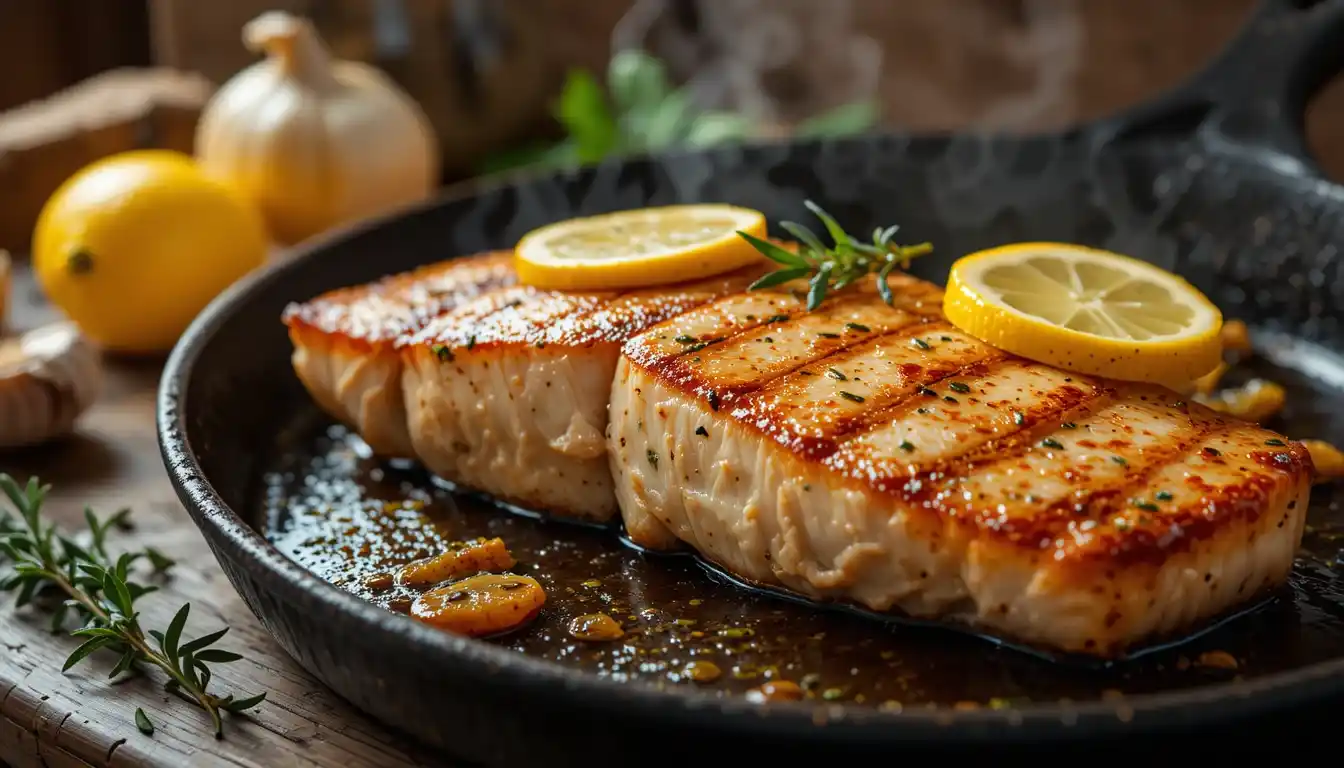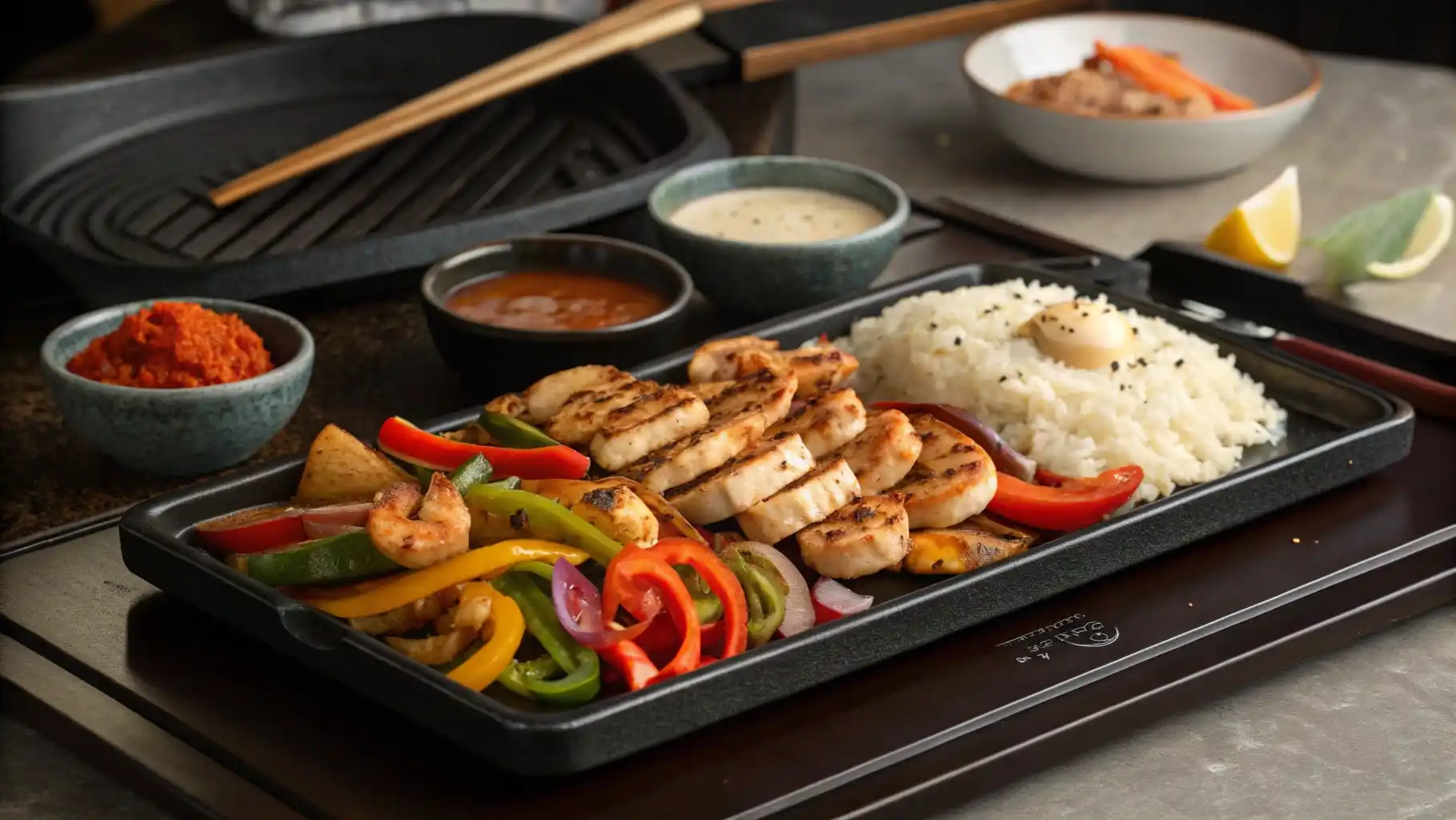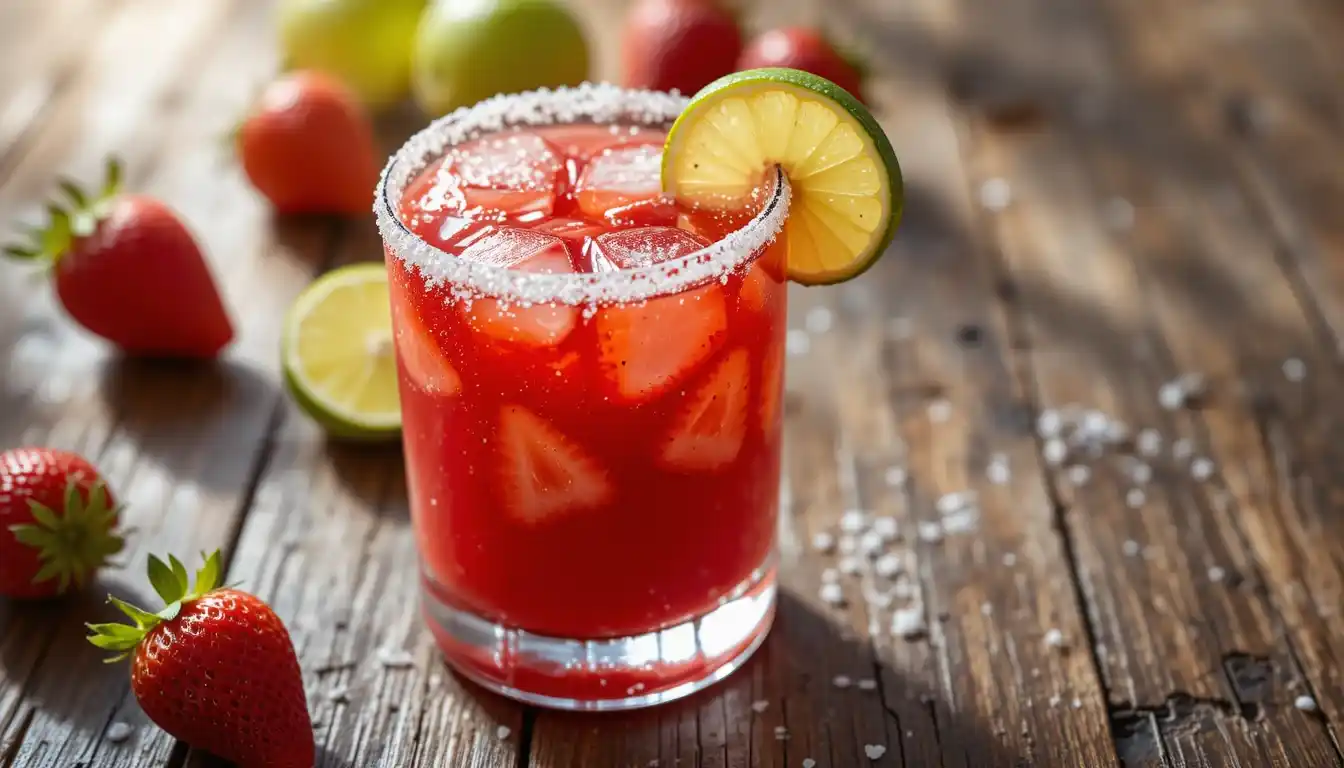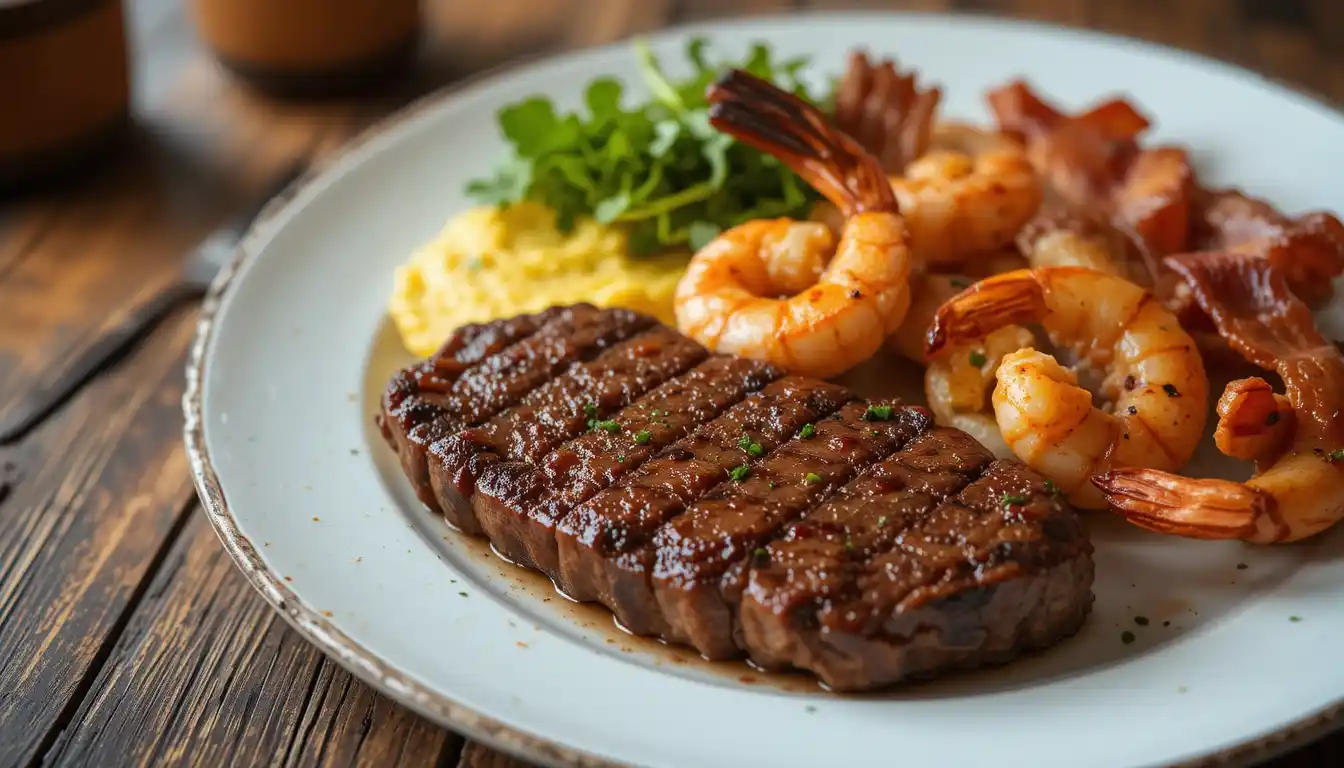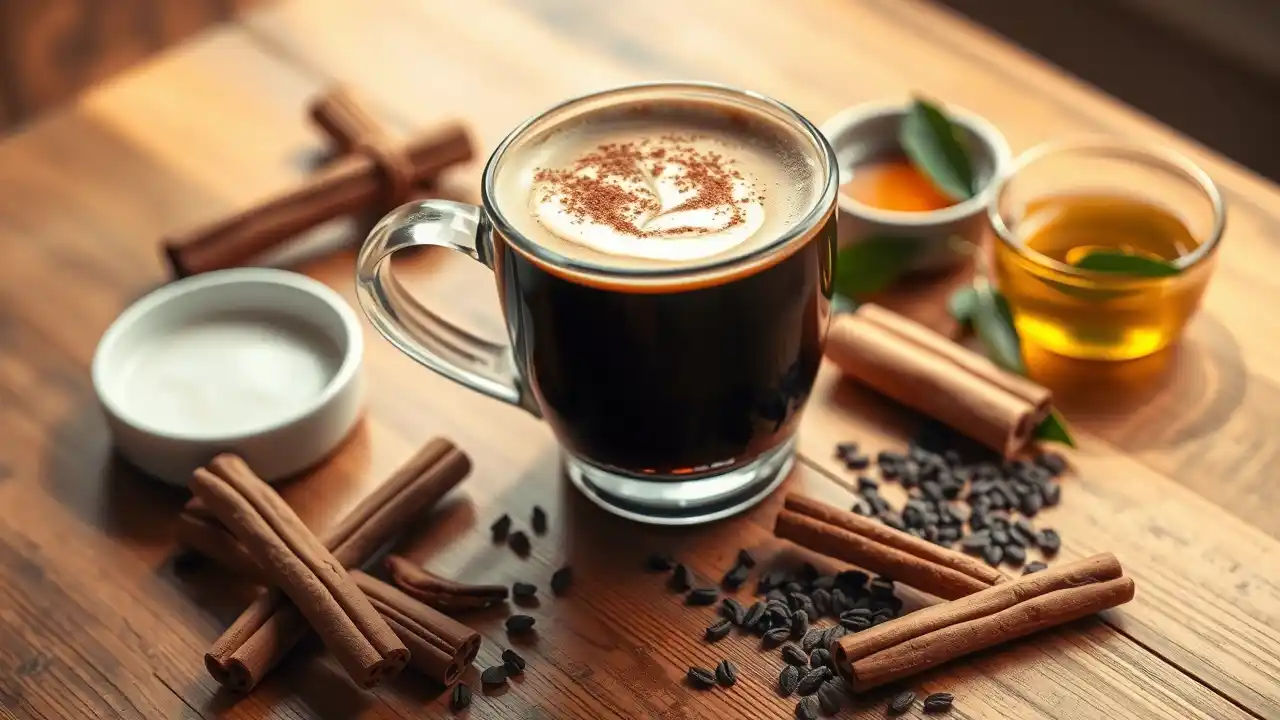Did you know that making hibachi at home can save you about $100 compared to dining out at a Japanese steakhouse? That’s right – you can enjoy the same delicious hibachi recipe without the hefty restaurant bill.
Additionally, the average hibachi meal at a restaurant contains around 1,000 calories, while our homemade hibachi chicken recipe has just 499 calories per serving. However, there’s often confusion about what hibachi actually is. Hibachi refers to a portable charcoal grill, whereas teppanyaki involves cooking on a flat steel surface – the style most Americans associate with hibachi restaurants like Benihana.
We love creating hibachi at home because it’s incredibly versatile and quick. In fact, you can prepare a complete hibachi chicken recipe in under 30 minutes, making it perfect for busy weeknights. The hibachi ingredients are simple: your choice of protein served with sautéed vegetables like zucchini and onions, alongside flavorful fried rice. For the best results with recipes with yum yum sauce, you’ll need basic ingredients like mayonnaise, ketchup, and Sriracha.
In this guide, we’ll share all our secrets for how to make hibachi at home that rivals your favorite Japanese steakhouse – without the performance or the price tag!
Gathering Your Hibachi Ingredients
“Basically, you get to come in and have a one-on-one training with one of the chefs, learning the art of teppanyaki from the signature fried rice, to the shrimp appetizer, steak entree and shrimp entree.” — Miss Foodie Problems, Food blogger and Benihana experience reviewer
The foundation of any great hibachi recipe starts with selecting the right ingredients. Creating authentic hibachi at home requires specific components that work together to achieve that distinctive Japanese steakhouse flavor.
Choosing the right protein: chicken, steak, or shrimp
The protein is the star of your hibachi experience. For steak lovers, New York strip (striploin) is ideal because it offers the perfect balance between meatiness and fat, keeping the meat juicy while cooking quickly. Filet mignon and ribeye are excellent alternatives for a more premium meal. When selecting chicken, both boneless breasts and thighs work well, with restaurants typically preferring chicken breast. For seafood options, large peeled shrimp, scallops, or even lobster tail cut into 1-inch pieces will create an impressive hibachi spread. Furthermore, tofu provides a fantastic vegetarian alternative.
Essential vegetables for hibachi at home
Traditional hibachi vegetables create the perfect complement to your proteins. The classic combination includes zucchini, sweet onions, and mushrooms. Specifically, at establishments like Kobe Japanese Steakhouse, they incorporate broccoli florets and carrots for added color and nutrition. When preparing these vegetables, cut zucchini into strips, quarter mushrooms, and roughly chop onions to mimic restaurant-style presentation. Notably, adding vegetables in stages (carrots and broccoli first, then zucchini, followed by onions and mushrooms) ensures everything cooks properly.
What you need for fried rice and noodles
For authentic hibachi fried rice, day-old cold rice is essential as it maintains its texture and absorbs flavors better. When it comes to rice preparation, you’ll need eggs, butter, soy sauce, and a dash of toasted sesame oil for that signature taste. Green onions added at the end provide freshness and color. For hibachi noodles, traditional yakisoba noodles are ideal, though linguine, udon, or even ramen noodles can substitute in a pinch.
Sauce ingredients: soy, sesame oil, garlic, and more
The secret to hibachi’s distinctive flavor lies in its sauces. Soy sauce serves as the foundation, preferably low-sodium to control saltiness. Toasted sesame oil (rather than regular) delivers that authentic smoky flavor. Unsalted butter combined with minced garlic creates the essential garlic butter that hibachi chefs use liberally. Additionally, teriyaki sauce, mirin, and fresh ginger round out the flavor profile for both proteins and vegetables.
Making the Signature Sauces for Your Hibachi Recipe at Home
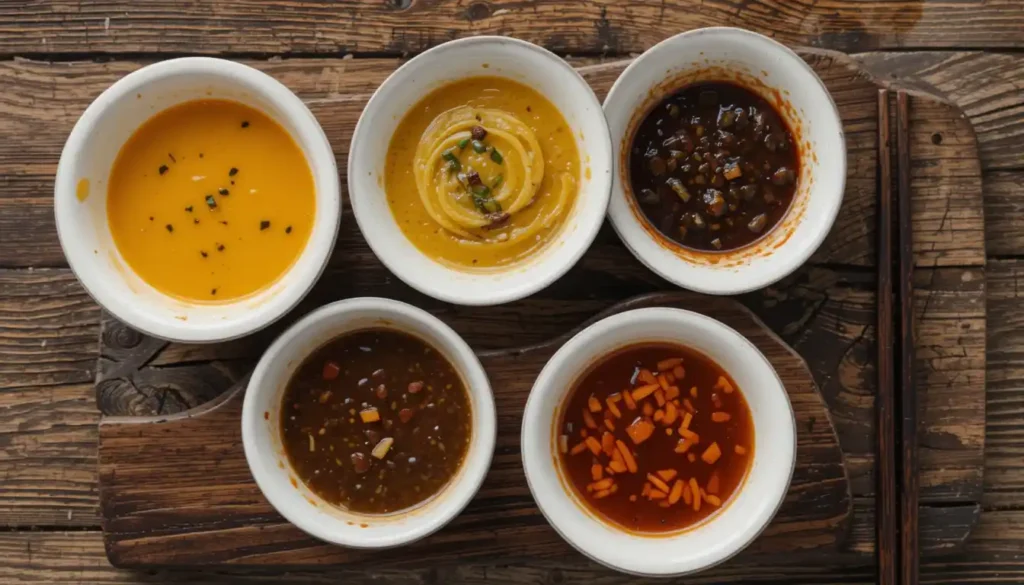
The signature sauces are what truly elevate a simple hibachi meal to restaurant quality. Creating these flavorful condiments at home is surprisingly straightforward yet makes all the difference in your hibachi experience.
Creamy Yum Yum Sauce – The Star of Any Hibachi Cooking Experience
Yum yum sauce—that creamy, tangy condiment served at Japanese steakhouses—can be prepared in just 5 minutes. To create this classic sauce, mix ½ cup mayonnaise with ½ tablespoon sriracha (instead of ketchup for more complexity), ½ tablespoon mirin, 1 teaspoon rice vinegar, and 2 teaspoons sugar. For depth of flavor, add ½ teaspoon each of garlic and onion powder. Initially, the sauce might taste strong, but its flavors meld beautifully when refrigerated overnight. This versatile sauce pairs perfectly with hibachi chicken, vegetables, and even works as a dipping sauce for burgers or fries.
Spicy Mustard Sauce Recipe to Mimic Benihana’s Secret Blend
The distinctive mustard sauce found at Benihana and other hibachi restaurants combines spicy and creamy elements. For authentic mustard sauce, dissolve 3 tablespoons of ground mustard powder in hot water to create a lump-free paste. Subsequently, combine this paste with ¼ cup soy sauce, ¼ cup water, 2 tablespoons heavy cream, and a pinch of garlic powder. Alternatively, toast 1 tablespoon of sesame seeds until golden brown and add them to the mixture for enhanced texture and nutty flavor. Store the sauce in an airtight container in the refrigerator for up to 3-4 days.
Garlic Butter – The Secret Weapon in Teppanyaki-Style Recipes
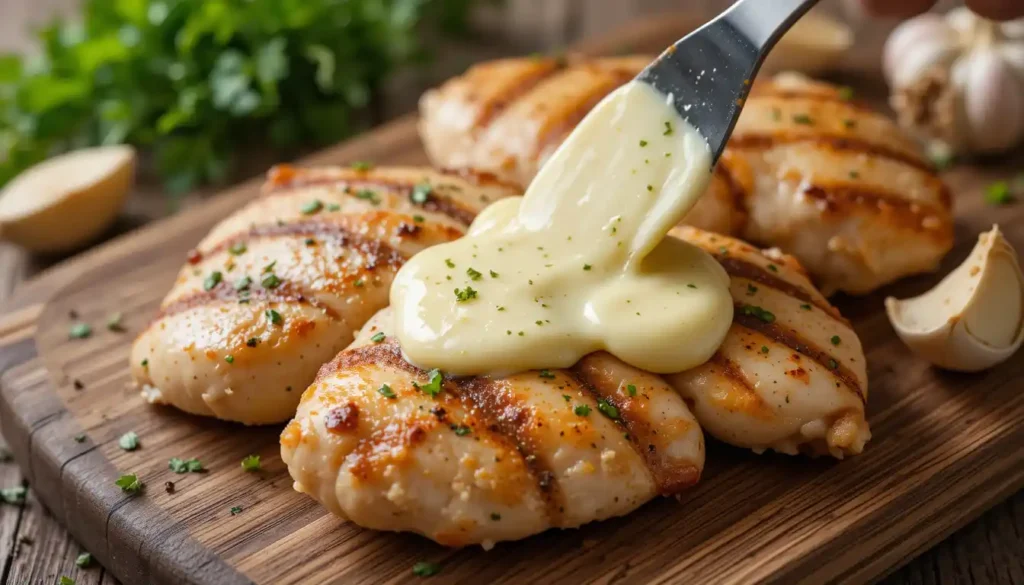
Garlic butter is essentially the secret weapon in hibachi cooking. Begin by taking unsalted butter at room temperature—this is crucial for proper mixing. Thereafter, grate two large garlic cloves using a microplane to create a paste-like consistency. Mix the garlic with 1-2 teaspoons of low-sodium soy sauce until completely combined. Finally, add this mixture to whipped butter and thoroughly blend. For even more complex flavors, consider using roasted garlic instead of raw—simply cut the top third off garlic heads, bake for 30-45 minutes at 350°F until soft, then mash and mix with butter. This compound butter keeps for about 2 weeks refrigerated or up to 3 months when frozen.
Step-by-Step Guide to Cooking Hibachi at Home Like a Chef
“One of my favorite things to do was creating the onion volcano, so simple yet so cool.” — Miss Foodie Problems, Food blogger and Benihana experience reviewer
Success in creating restaurant-quality hibachi starts with proper execution of each cooking step. Unlike complex culinary techniques, hibachi focuses on high heat, proper timing, and layering of flavors.
Prep Like a Pro Before Starting Your Hibachi Recipe
The Japanese concept of “mise en place” (everything in its place) is crucial for hibachi cooking. I chop all vegetables before starting—zucchini into strips or quarters, mushrooms halved or quartered, and onions roughly chopped. For proteins, I cut them into uniform bite-sized pieces to ensure even cooking. Moreover, preparing ingredients ahead saves considerable time during the actual cooking process. Consequently, I prepare sauces, rice, and garlic butter at least a few hours before cooking, if not the day before.
Cook the Fried Rice First for Perfect Texture Every Time
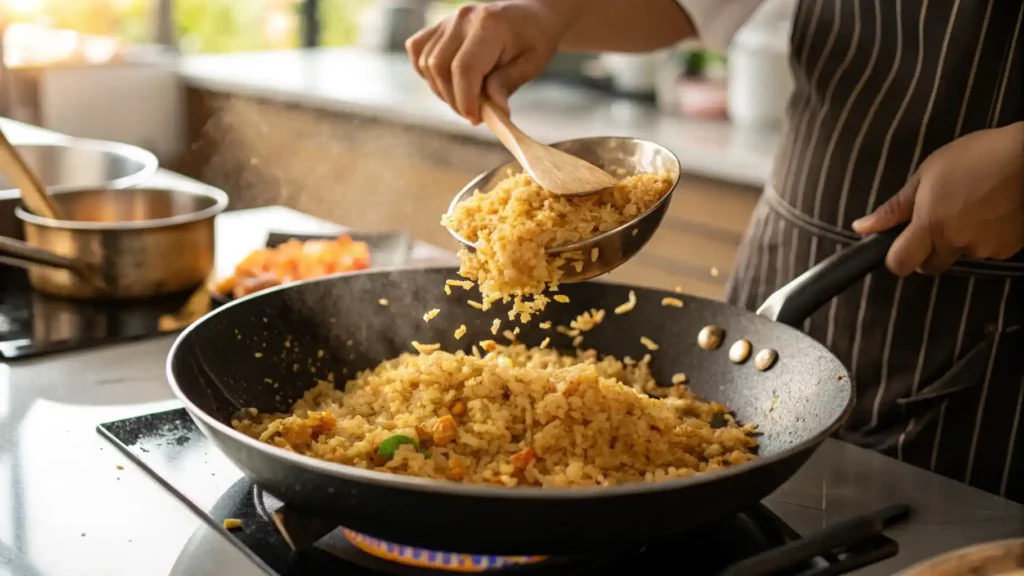
I always begin with fried rice since it holds heat well. Over medium-high heat, I melt butter and add finely minced garlic and onions, sautéing for about 2 minutes until soft. Afterward, I add cold rice (day-old is best) and stir to coat with butter. Once the rice is warmed through, I make a well in the center to scramble eggs, cooking for 2-3 minutes until just set. Next, I mix everything together and add 2-3 tablespoons of soy sauce, cooking for another 3 minutes until it’s absorbed.
Sauté Vegetables to Tender-Crisp Perfection
For vegetables, I heat my pan for at least 5 minutes until very hot. Upon reaching temperature, I add oil and butter, then introduce vegetables in stages—longer-cooking items first. I let them sear undisturbed for 1-2 minutes before tossing, allowing that characteristic golden-brown color to develop. For best results, I avoid overcrowding the pan, cooking in batches if necessary. Accordingly, I cook vegetables for 5-7 minutes total, maintaining a tender-crisp texture.
Cook the Protein with Hibachi Sauce for Maximum Flavor
I cook proteins separately from vegetables to ensure proper doneness. For chicken or steak, I sear over medium-high heat for about 2 minutes per side. Once browned, I cut proteins into bite-sized pieces and return them to the pan. Thereupon, I add garlic butter, soy sauce, and teriyaki sauce, cooking for another 2 minutes until the sauce caramelizes into the meat. For shrimp, I cook until just opaque—usually 3-4 minutes total—to prevent overcooking.
Combine and Plate Your Easy Hibachi Cooking Masterpiece
I serve each component separately yet together on the same plate—rice mounded on one side, vegetables alongside, and protein as the centerpiece. For finishing touches, I sprinkle sesame seeds and green onions over everything. Optionally, I place small bowls of yum yum sauce and mustard sauce on the side for dipping.
Tips for Perfecting Your Homemade Hibachi Dish
After mastering the basic hibachi cooking techniques, these professional tips will transform your homemade hibachi from good to restaurant-quality. Indeed, small adjustments make significant differences in flavor and texture.
Use Cold Rice for Better Texture in Hibachi Fried Rice
For authentic hibachi fried rice, day-old refrigerated rice is non-negotiable. Freshly cooked rice contains too much moisture, resulting in mushy clumps rather than the distinct grains you want. If you don’t have leftover rice, cook fresh rice earlier in the day, spread it on a baking sheet in a single layer, and refrigerate uncovered for 30-60 minutes. This quick-cooling method draws out excess moisture while maintaining the rice’s integrity.
Avoid Overcrowding the Pan for Authentic Hibachi Sear
Overcrowding is perhaps the most common mistake in hibachi cooking. When too many ingredients compete for space, they steam rather than sear. For best results, I use a large, wide pan or griddle to maximize surface area. Still, even with a large cooking surface, working in batches produces better results. Specifically for proteins, ensure each piece has ample space around it to develop that characteristic golden-brown color.
Adjust Seasoning to Taste for Balanced Hibachi Flavors
Balancing flavors requires attention and adjustment. Firstly, remember that soy sauce adds significant sodium, so season with salt sparingly. When making fried rice, 2 tablespoons of low-sodium soy sauce typically provides sufficient flavor. Besides regular seasonings, a final spritz of fresh lemon juice just before serving brightens the entire dish. Taste throughout the cooking process, adding ingredients gradually rather than all at once.
Smart Storage and Reheating Tips for Leftover Hibachi Meals
Properly stored hibachi keeps well for future meals. Refrigerate leftovers in airtight containers for up to 5 days or freeze for up to 3-4 months. When reheating, avoid the microwave if possible as it can dry out the food. Chiefly, a hot pan works best for reheating—adding a splash of water or broth prevents drying. For hibachi steak specifically, heat in 30-second intervals just until hot to prevent overcooking.
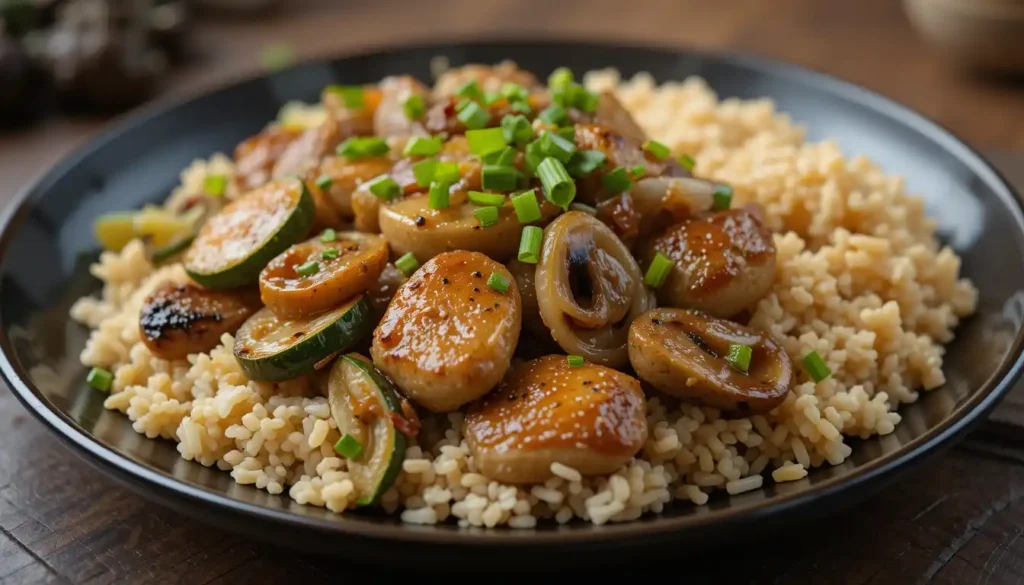
Conclusion – Enjoy Restaurant-Style Hibachi Recipe at Home Without the Cost
Creating restaurant-quality hibachi at home certainly transforms ordinary weeknight dinners into special culinary experiences. Throughout this guide, we’ve explored every aspect of hibachi cooking—from selecting the perfect proteins and vegetables to crafting signature sauces that rival Benihana’s secret recipes. Most importantly, this homemade approach saves approximately $100 per meal while cutting calories in half compared to restaurant versions.
The beauty of hibachi cooking lies in its simplicity and versatility. After mastering these techniques, you’ll find endless possibilities for customization based on your family’s preferences. Additionally, the quick 30-minute preparation time makes this an ideal solution for busy weeknights when you crave something special without the restaurant wait times.
Remember, the key to authentic hibachi results stems from proper preparation. Therefore, take time to organize your ingredients before cooking, use day-old rice for perfect texture, and cook in batches rather than overcrowding your pan. These simple steps undoubtedly elevate your homemade hibachi from merely good to restaurant-quality excellent.
Last but not least, don’t hesitate to experiment with different protein combinations or vegetables once you’ve mastered the basics. The hibachi cooking method adapts beautifully to whatever ingredients you have on hand. Consequently, you’ll soon discover this technique becomes an essential part of your regular cooking repertoire—delivering restaurant-worthy meals at a fraction of the cost, any night of the week.
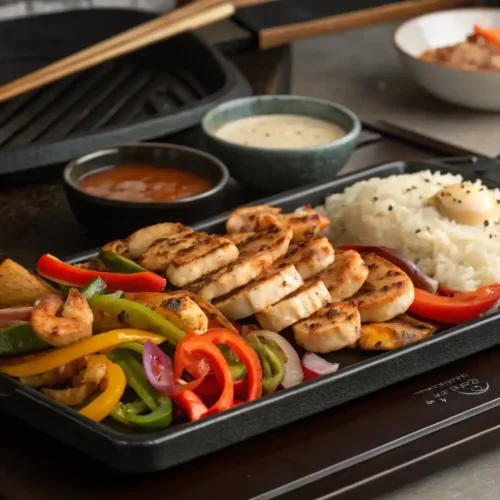
Restaurant-Style Hibachi Recipe at Home
Equipment
- Pan
- Griddle
Ingredients
Protein Options
- 1 lb boneless chicken breast cut into bite-sized pieces
- 1 lb shrimp peeled and deveined
Vegetables
- 1 cup zucchini cut into strips
- 1 cup sweet onion cut into quarters
- 1 cup mushrooms quartered
Fried Rice Ingredients
- 2 cups day-old cold rice preferably long-grain
- 2 tbsp unsalted butter
- 2 tbsp soy sauce preferably low-sodium
- 1 tbsp sesame oil toasted
Sauce Ingredients
- 1/2 cup mayonnaise
- 1/2 tbsp sriracha for yum yum sauce
- 1/2 tbsp mirin for yum yum sauce
Instructions
- Prepare all ingredients: chop vegetables, slice proteins, and cook rice ahead of time. Combine mayonnaise, sriracha, mirin, and garlic powder for the yum yum sauce. Set aside.
- In a hot griddle or pan, melt butter and sauté garlic and onion until softened, about 2 minutes.
- Add cold rice, and sauté it with butter for 3-4 minutes until warmed through. Create a well in the center and scramble the eggs, then mix everything together. Add soy sauce and sesame oil, cooking for an additional 3 minutes.
- For vegetables, heat the griddle and sauté carrots and broccoli first, then add zucchini, mushrooms, and onions. Cook for 5-7 minutes, keeping the vegetables tender-crisp.
- For protein, sear the chicken or shrimp until browned and cooked through. Add garlic butter and teriyaki sauce for flavor, then cook for 2 more minutes until the sauce caramelizes.
- Serve everything separately on a plate: rice on one side, vegetables on the other, and protein as the centerpiece. Serve with yum yum sauce and spicy mustard sauce on the side.



